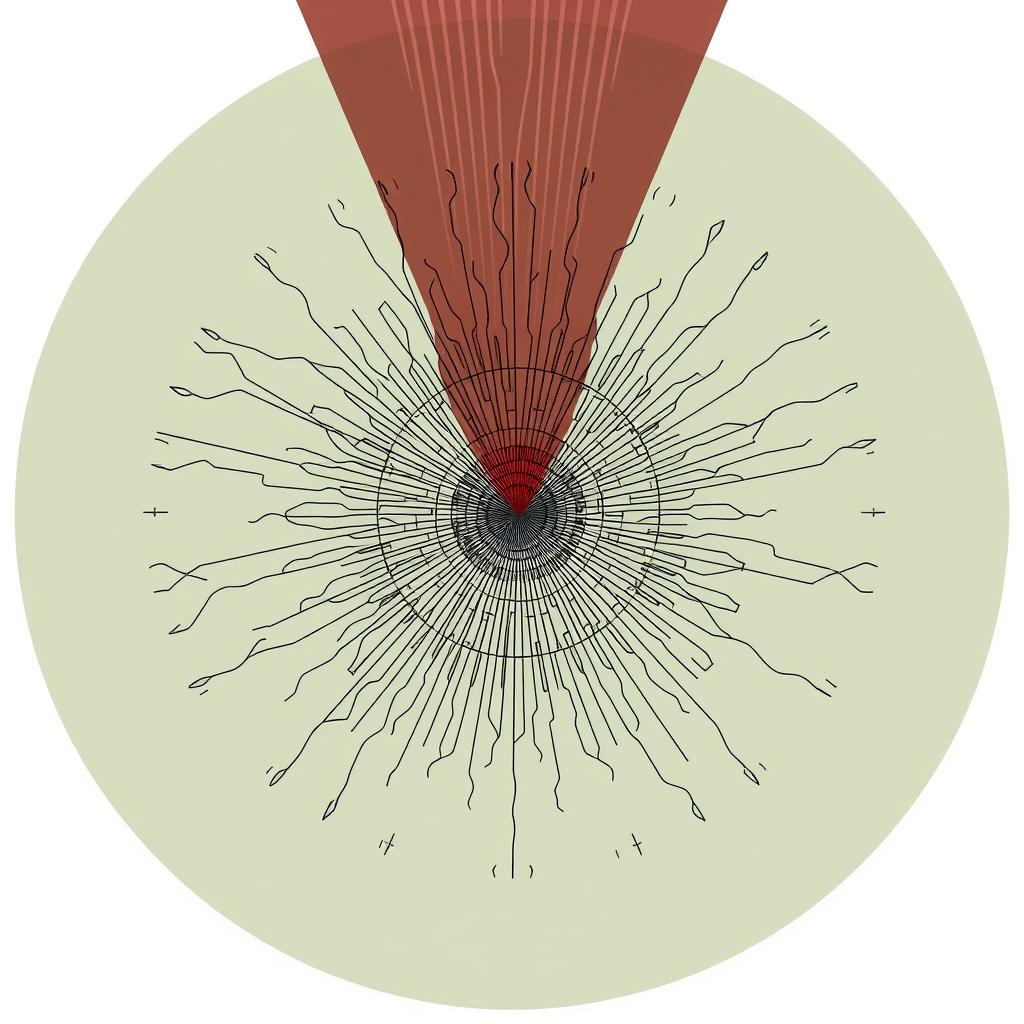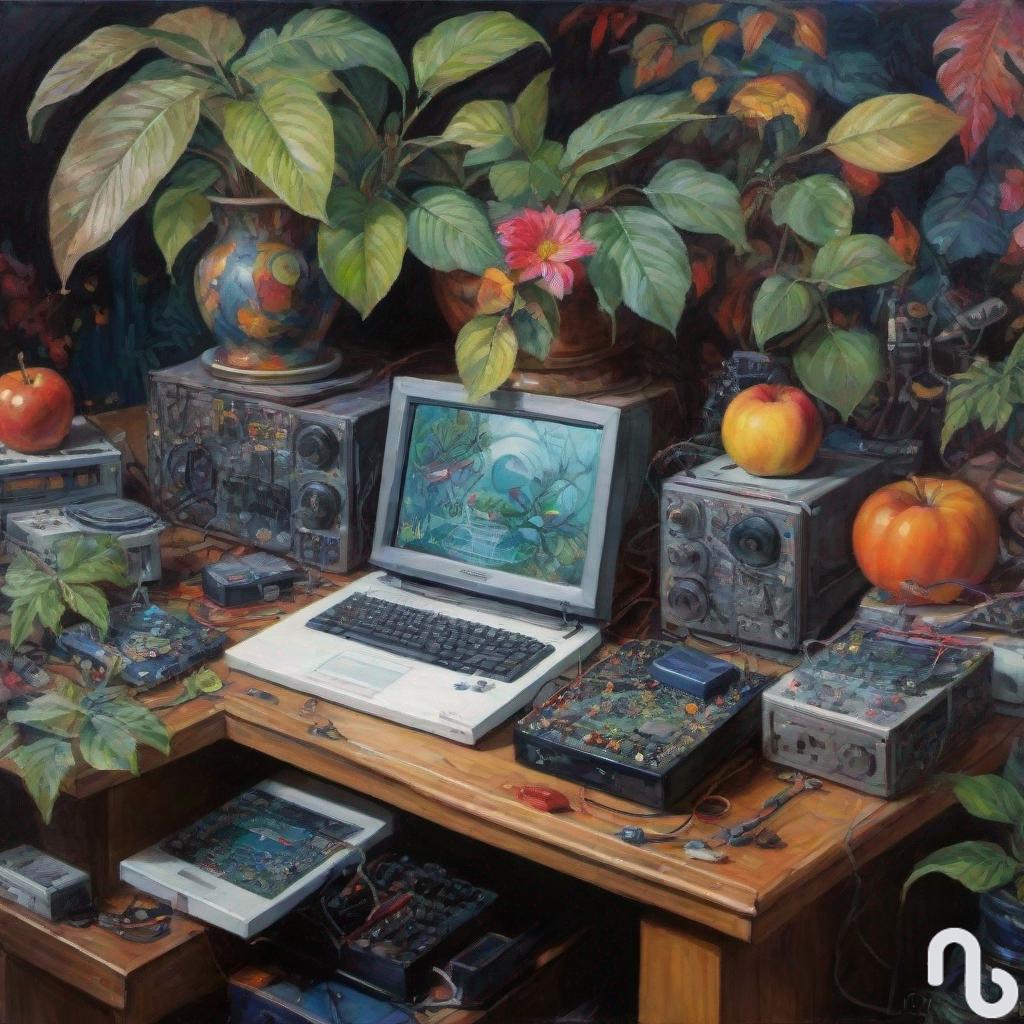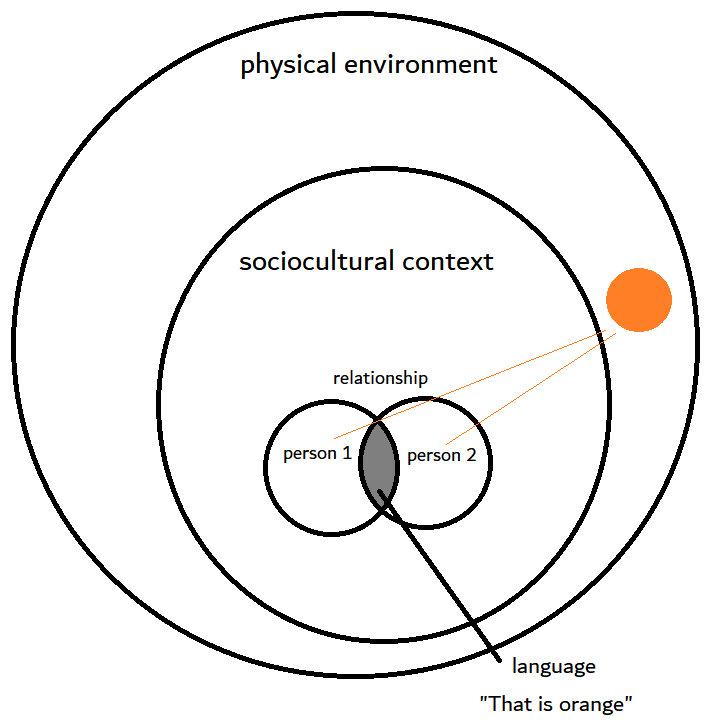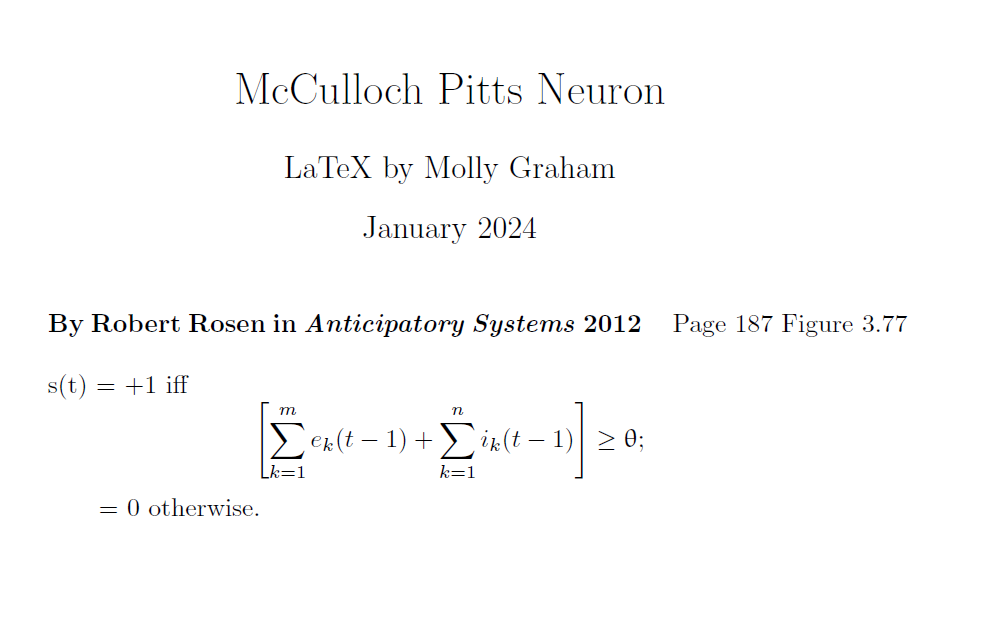This is a topic I have been wanting to write about for a long time, since reading Itzhak Bentov’s book Stalking the Wild Pendulum. Until I had read this book, I dismissed panpsychism as a crazy theory with no connection to reality. Briefly, panpsychism suggests that consciousness is a fundamental feature of the universe,1 and arises from a system’s functional organization.2 If a certain organization is achieved, the system is capable of phenomenal experiences like pain or the taste of lemon. Differing levels of consciousness can be explained by appealing to the complexity of this functional organization; for example, a flatworm is more conscious than a rock.3 Though popularized by David Chalmers in the 1990’s, some central tenets of panpsychism can be traced back to Spinoza4 and Leibniz.5 Within the multitude of versions of panpsychism, however, no connection to any scientific knowledge is made, making it difficult to support. I’m all for crazy theories but my interest is proportional to its relation to something we know or suspect about the world. Bentov’s discussion of consciousness, however, provides a means for connecting the theory to something adjacent our current scientific understanding. It’s just a lead though, and much more work must be done to establish a sufficiently robust theory. That said, even if a theory were to be established, even more work will be required to ensure Bentov’s ideas are correct. With respect to physics and Earth sciences, he may be mistaken about one or more aspects of the premises he uses to generate his theory. We will have to see.
In Chapter 5 of Stalking the Wild Pendulum, titled ‘Quantity and Quality of Consciousness’, Bentov begins with a definition of ‘consciousness’. Though simple, he claims that “it is the capacity of a system to respond to stimuli.”6 Previously, I have defined ‘consciousness’ as something like an awareness of internal and external environments, so it seems that Bentov and I are on the same page here. Bentov goes on to state that though we commonly think of these kinds of systems as nervous systems, this definition applies to all sorts of systems even non-living ones. He anthropomorphizes atoms by stating that they “respond” to stimuli like the presence of electromagnetic radiation, since their electrons jump into higher orbits as a result. His next examples involve bacteria and viruses which is less of a metaphorical stretch. He concludes that “the higher and more complex the organism, the more varied and the more numerous the responses per stimulus.”7 Sure, but an atom isn’t an organism, so I’m still not sure about that one, but I will grant the stretch to bacteria and maybe viruses. Anyway, he goes on to state that the quantity of consciousness refers to the number of responses exhibited for the same stimulus.
He does address the reader’s probable concern about atoms and states that “we may at first have trouble trying to visualize a rock or an atom as a living thing because we associate consciousness with life.”8 Right, and arguably for good reason, however, let’s see where this train of thought takes us. So for the sake of charitability and open-mindedness, I will grant him the stretch despite remaining sceptical. He thinks that our discomfort with this idea is a human limitation, and in a similar way, a rock might have trouble understanding human consciousness. To Bentov, “consciousness resides in matter”9 which starts to sound like panpsychism. Different amount of matter or mass contains differing amounts of consciousness, where quantity and quality is determined through “different evolutionary levels.”10
The quality of consciousness is associated with “the level of consciousness” determined by the “frequency-response range of the system.”11 By this, he refers to the range of frequencies an agent can detect; for example, human hearing exists within the range of about 20 or 30 Hz to about 20,000 Hz.12 Therefore, the wider the range, the higher the level of consciousness. Bentov also describes quality in terms of the intelligence of the response, or the number of responses the agent is capable of producing.13 He also describes this as refinement, where the agent is able to understand and possibly report on a number of aspects of experience, rather than a few. Consider the sommelier versus the novice wine-drinker; the sommelier is able to pick out notes of cherry, pine, or smoke, where the newbie simply tastes sweet or sour. Different organisms or agents are capable of differing levels of consciousness, where a worm or fruit fly is at a lower frequency-response range than an elephant or human.14 To illustrate these levels, Bentov supplies a handy diagram which I have recreated by hand:

The energy-exchange curves “show the extent of energy exchange between an entity and its environment” where “the maximum energy exchange, or interactions of [human] beings with their environment, occurs at the peak of the curve. It is [our] point of resonance with the environment.”15 He later states that “at the highest levels, this means control over the environment”16 which suggests that humans have more control over the environment than rocks and grasshoppers. Differing levels of consciousness ultimately mean differing realities. The reality the grasshopper experiences is simpler and less refined than the reality humans experience.
The astral level is the dream level, an idea which is not unique to Bentov. I have encountered this idea from reading about spirituality and ancient religions, and to some, is not all that foreign or esoteric. When we dream during REM sleep, we actually transcend our physical reality into a different reality, supposedly. This is why the energy-exchange curves overlap, because different levels of reality and control are not discrete or finite, and can overlap with each other to a degree.
In Chapter 6, Bentov explores “relative realities” by first considering plants. Like animals, they grow and reproduce, purportedly responding to human emotions as per the work of Peter Tompkins and Christopher Bird in The Secret Lives of Plants.17Maybe their studies don’t reproduce or rely on faulty assumptions, but let’s ignore that for a moment. Plants also move in response to stimuli; recall the sunflower as it follows the sun. From here, Bentov discusses animals and their characteristics, noting how these organisms can be viewed as a range of complexity given their stage in evolutionary development. There isn’t much said here that overly conflicts with biological perspectives, so I won’t go into detail here. He also discusses drugs and human experiences, as they allow us to access higher levels of consciousness, another uncontroversial perspective for the initiated. Next, Bentov discusses particle-wave duality to motivate his further discussion of consciousness.18 Most of us are vaguely familiar with this idea; photons can be considered as particles or waves. A particle, articulates Bentov, is a wave-packet, similar to a little “bubble” of waves confined to a specific space through individuation. Kind of like water in the form of rain versus in the form of a puddle. Within the body of water, like a puddle or ocean, water molecules are everywhere and unindividuated, but in rain, they become individuals as droplets.
Bentov now jumps to a discussion of individuation in nature.19 A mountain valley, roughly speaking, consists of a sheet of rock, acting like a continuum. Now within this valley, let’s say we have a massive boulder. Though once part of the valley, it has broken off to become its own “individual.” His next move is to claim that “matter is consciousness” only to add in parentheses that “matter contains consciousness,”20 a claim which overlaps with panpsychism. If there is a critical mass of matter, it is able to develop a “dim awareness of self.” It was Chalmers who stipulated that consciousness arises from functional organization, but it isn’t a stretch to consider that very simple organizations, like rocks, may still have some level of consciousness. Maybe they don’t feel pain or know the taste of lemon, but some form of qualia or consciousness theoretically exists even within simple organizations. Chalmers’ move was to say that certain qualia will appear when functional organizations are obtained. Returning to Bentov now, he states that “over millions of years this dim awareness may be strengthened into a sharper identity, possibly through interaction with other creatures. If an animal finds a hiding place within a rock formation, it will feel grateful to the rock for shelter, and the rock will feel it.” The animal’s consciousness, higher than the rock’s, “will give its [the rock’s] consciousness a push upward.”21 Eventually, this consciousness of the rock becomes “a spirit of the rock” and its energy-exchange curve will reach into the astral region.22 When a man stumbles upon this rock, he will feel or sense that there is something special about this rock, becoming impressed or impacted in some manner. Strong claims indeed.
As a quick aside, Bentov describes the ways in which our thoughts impact aspects of the environment. Because devices and instruments like EEGs can pick up electromagnetic magnetic energy emitted by neurons, and because no energy is lost within the universe but merely transferred, “it means that the energy of thought was broadcast in the form of electromagnetic waves, at the velocity of light into the environment and, finally, into the cosmos.”23 Moreover, since thought can be focused, it is possible to “send coherent thoughts” to be received by the person “for whom the thought was meant.”24 This applies to the rock as well. The rock, becoming more aware and ascending in quality of consciousness, is slowly able to increase its control over the environment. The example Bentov uses is a copper mine, where ceremonies held for the rock inspires it to perform certain actions.25 In Peru, he states, llamas would be sacrificed to protect miners, preventing a collapse of the mine. Otherwise, the rock is able to perform “tricks” like collapsing the mine onto humans digging for copper.
“In a way, all these minor gods or Nature spirits rely on the energy they get from others to keep themselves powerful. Just like politicians, their power and influence depends on their constituency. Eventually, as their constituency diminishes, they fade from the scene, as did the gods of ancient peoples, for examples, the Baal, the Moloch, the Greek and Roman gods, etc.”26
It’s interesting that Bentov chose those two gods to begin his list of examples… It’s even more interesting that poor Bentov would die as a result of the famous crash of American Airlines Flight 191.
Anyway, the chapter finishes with a discussion of the astral realm, communicating with the dead, and human creativity. I will let you read these bits yourself as they aren’t exactly related to this discussion of panpsychism. My goal here was to establish an interesting connection between panpsychism and some sort of further explanation of it, as uncovered in Bentov’s Stalking the Wild Pendulum. Though incomplete, it’s at least a lead for further study, as it overlaps with ancient religions and our current understanding of physics. Sure, some of Bentov’s claims are worthy of scepticism, however, I find this more compelling than panpsychism alone. Recall that one of the 7 Hermenutic Principles is that “all is mental, all is mind.” It’s a difficult idea to accept given our current veneration of science and empiricism, but maybe we have been mistaken. Maybe there is more to life than the material world. I don’t know for sure, however, my personal experiences have hinted at otherwise. You, dear reader, have your own experiences; listen to them. Remain open yet critical. The truth is somewhere in the middle.
Part two of this series investigates the Quantum Theory of Consciousness and Bentov’s discussion of quantum mechanics. I might also get into his ideas regarding Earth sciences too, depending on how much overlap is involved. Otherwise, it will be saved for a separate post. There is so much to say about these crazy theories, so I must break it up into separate entries. I’m also in the midst of reading Spinoza which has been very interesting and rewarding, and someday I will establish further connections between his philosophy and these strange ideas. For more info on panpsychism, check out this excellent YouTube video by Carneades.org.

Works Cited
1 William Seager, Theories of Consciousness : An Introduction and Assessment (Routledge, 2016), 287, https://doi.org/10.4324/9780203485583.
2 Seager, 288.
3 David Skrbina, Panpsychism in the West (The MIT Press, 2017), 11, https://doi.org/10.7551/mitpress/11084.001.0001.
4 Seager, Theories of Consciousness, 317.
5 Seager, 291.
6 Itzhak Bentov, Stalking the Wild Pendulum: On the Mechanics of Consciousness (Rochester, Vermont: Destiny Books, 1988), 77.
7 Bentov, 77.
8 Bentov, 78.
9 Bentov, 78.
10 Bentov, 78.
11 Bentov, 78.
12 Bentov, 79.
13 Bentov, 79.
14 Bentov, 85.
15 Bentov, 80.
16 Bentov, 83.
17 Bentov, 93–94.
18 Bentov, 97.
19 Bentov, 98.
20 Bentov, 98.
21 Bentov, 99.
22 Bentov, 99.
23 Bentov, 100.
24 Bentov, 101.
25 Bentov, 101.
26 Bentov, 102.














